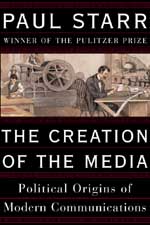Fear of Print

In a time where there are so many mediums of media, it is hard to understand how much of an impact print had on society when it was first introduced. While we currently have the world at our fingers with the internet and instant access with live television, in the 16th century print was an innovative concept. It was so new and cutting edge that it was often considered taboo and controversial, as pointed out by Paul Starr in The Creation Of The Media (pg.28):
"In 1543, the Catholic Church banned all books except those that had its
approval, and in 1559 it issued its first Index of Forbidden Books. ... in a
proclamation in 1538, Henry VIII established a licensing system for all books in English. During the sixteenth century, the English government also prosecuted those responsible for troublesome publications such grounds as treason, heresy, and 'false news' ..."
Reading about the fear and censorship portrayed at the beginning of print opened my eyes to the rights American writers have with free press. While there is much improvement on the liberties the mass media have developed, by no means do I believe that we have perfected the process of open journalism as a society. In the 16th century the Catholic Church and various monarchs had the power to limit what the public could do with print, now, eventhough there are biases by corporations and political agendas, with the limitlessness of the internet there is hardly any censorship anymore.

1 Comments:
A good subsantial post.
Governments and the Catholic church did attempt to censor, prohibit and control print. At the same time it is important to see how governments also facilitated the distribution of print as well.
Post a Comment
<< Home